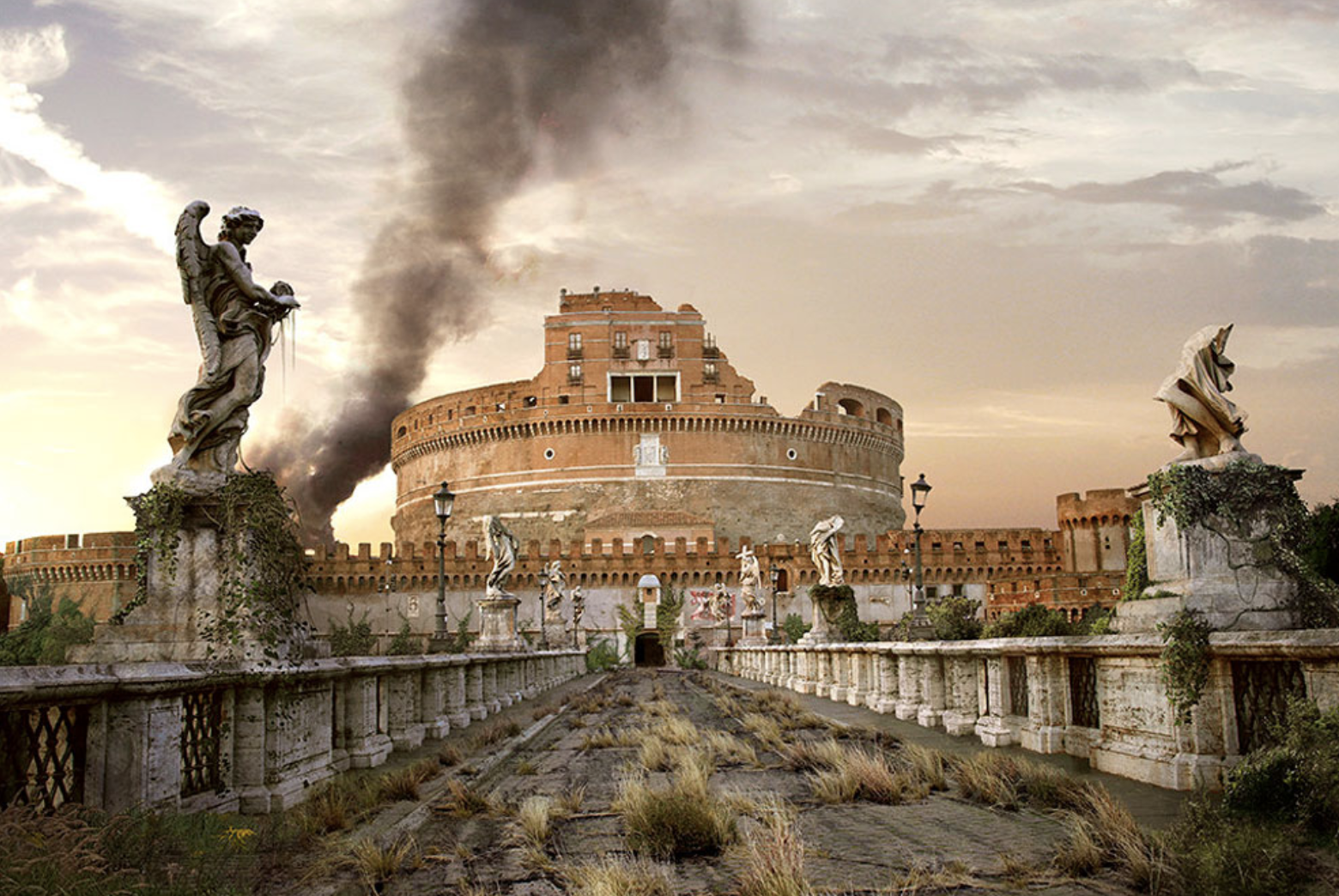The Post-Apocalyptic World of the Roman Empire After the Fall

When the technology and institutions that prop our modern world up are cut away, the resulting landscape will be a dark, lawless place where violence and brutality will hold sway. Any government, such as it is, will be imposed on us by force and will not last long amidst the anarchy and chaos. Thus, the table will be set for even worse suffering to come in the form of famine, disease, and starvation.
The Western Roman Empire after the abdication of the last emperor in 476 AD was just such a place. The vacuum created by the implosion of civic order after the Imperium collapsed led to the imposition of a barbarian monarchy in Italy under the rule of a warlord named Odoacer (pronounced oh-doh-ay-ser).
The First King
So hazy are the historical details from this period that historians aren’t sure which tribe Odoacer came from. Thus, ironically, after a thousand years of barbarian incursions across the Roman border, we cannot say which tribe prevailed and seized control of the Roman homeland, the greatest prize of all. It seems safe to say that Odoacer wasn’t the strongest barbarian strongman in the post-Roman world, just the luckiest. He happened to be in the right place at the right time. When the feeble, reluctant Emperor Romulus Augustulus abdicated his throne and ended the Imperium, Odoacer seized control and became Italy's first king.
Although Odoacer tried to play power politics by allowing the Roman Senate to keep functioning and by pretending deference to the emperor of the Eastern Roman Empire in Constantinople, such was the reality on the ground that he was being circled by hungry rivals eager to snatch his prize.
The Eastern Roman emperor, feeling the sting of the loss of his counterpart in the West, refused to recognize Odoacer and arranged to back the Ostrogothic king Theodoric in his bid to overthrow him. The two rival kings locked horns, and while they tramped back and forth across Northern Italy dealing death and destruction, the Burgundians struck south and seized valuable territory along the Northern Italian coast. Not to be left out of the free-for-all, the Vandals took Sicily, while the Visigoths hurried east to grab their share of the spoils. What remained of the Western Roman Empire was torn apart.
The Ravages of War
Odoacer was slain by Theodoric in 493 AD, leaving behind a landscape devastated by war and famine. The people of Italy were reduced to destitution and wandered the countryside homeless and starving. The once great Empire they had been born into had been reduced to smoke and ashes.
Although Theodoric then ruled as the King of Italy for thirty-three years and undertook significant restoration projects to restore the city of Rome, he was received coolly by the Roman Church, who disdained him as an outsider, and he was never officially recognized by the Eastern Roman Empire, the very people who had urged him to seize power in the first place.
If the East were fickle when it came Theodoric and the Ostrogoths, it was because they had designs of their own on Italy, but the threat of a Persian attack on their eastern flank kept them at bay until Theodoric’s demise in 526 AD when dynastic struggles between his successors weakened the Ostrogothic government, making it vulnerable to overthrow from outsiders.
The most menacing of these outsiders were the Vandals. For this reason, before invading the Ostrogothic Kingdom of Italy, the Eastern Romans undertook a surprise attack on the Vandals in their homeland of North Africa in 533 AD. Seeking revenge for a century of Vandal raids on their interests in the Mediterranean, the Eastern Romans didn’t hold back. They overran the Vandals and obliterated their capital. Such was the fury of the Eastern Romans that the Vandal kingdom was all but wiped out. Then they turned their sights on Ostrogothic Italy.
Despite Theodoric’s efforts to restore Rome, the devastation of the last fifty years had left it weak and impoverished. Living conditions were unsanitary and disease and famine were running rampant. The Eastern Roman’s invasion, although well intentioned, further undermined public health, and then, as if things couldn’t get any worse, the Persians attacked Byzantium.
Consequently, in 540 AD the bulk of the Eastern Roman army had to withdraw from Italy to defend the homeland. In their absence, the Ostrogoths fought back and retook control of most of Italian peninsula. In the course of things the city of Rome changed hands three times. The population was dramatically reduced by war, famine, and disease, and the city was left a virtual ghost town. But the worst was yet to come.
The Silent Predator
After dealing with the Persians in Byzantium, the Eastern Romans returned to Italy in 552 AD. This time, however, they brought with them a silent predator, a killer of such lethal potency 25 to 60% of Europe’s population would be eradicated over the course of the next two centuries. This was the Justinian Plague, whose devastating impact was equal to that of a nuclear war.
The Plague was first recorded in Egypt in 541 AD and from there it spread around the Mediterranean basin. Striking Constantinople in the mid-540’s, it was carried by soldiers to Italy in 552 AD and spread throughout western Europe by the mid-550’s. Symptoms included swelling in the armpits and groin, fever, chills, headaches, black pustules, delirium, nightmares, coma, and death. As if this wasn’t enough, the population was also being consumed by famine.
A series of volcanic eruptions in the mid-530’s raised a veil of atmospheric dust that blotted out the sun. As a result, crops failed and livestock starved. Then in 552 AD an earthquake in Beirut caused a tsunami that devastated coastal regions of the Mediterranean. But of all these horrors, the plague was by far the worst, wiping out an estimated 100 million people over the course of its run. It didn’t die out completely the mid-700’s AD.
A Wasteland of Misery and Death
So severe were the ravages of the plague in Italy that, although the Eastern Romans were successful in driving out the Ostrogoths, they were forced to withdraw from Italy for a second time. Their attempt to reestablish the Western Roman Empire fell short, and Italy, once the glittering center of the ancient world, became a wasteland of misery and death.
For years afterwards, hollow-eyed souls roamed the devastated countryside, starving, diseased, and without hope, falling on anyone weaker than themselves in a desperate attempt to survive. A zombie apocalypse couldn't be more terrifying. Only this zombie apocalypse really happened.
Today, most post-apocalyptic scenarios paint a bleak future where the modern world has collapsed under the weight of nuclear wars or environmental disasters, but largely forgotten is the real life post-apocalyptic scenario that occurred in Europe after the fall of the Roman Empire.
Isn't interesting that these days we look to science fiction and fantasy to provide us cautionary tales about where we're heading when the lessons of the past are so stark and resonant, if only we care to look at them. So, why don't we?
Maybe it's because the truth, for many of us, is way too scary.
